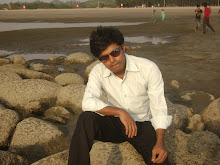In 1969 (Linus Torvalds was born), Ken Thompson & Dennis Ritchie (both were worked at AT&T's Bell Laboratories in the United States) wrote a small, general purpose operating system called UNIX. This operating system was written mostly in assembly language. In 1973, Thompson & Ritchie rewrote the operating system in C breaking way from the tradition of writing operating systems in assembly language. Around 1974, UNIX was licensed to universities for educational purpose, and a few years later it was made commercially available.
Many vendors such as Sun, IBM, HP and others purchased the source code of UNIX and develop their own version of UNIX. Most of these versions were proprietary and maintained by their respective hardware vendor. Developer waits for a long time for bug fixes to get released because the source code of these versions was not freely available.
In 1984, Richard Stallman’s began the GNU Project to create a free version of the UNIX operating system. The free software foundation successfully built a large number of tools that could be freely used, read, modified and distributed. Around 1990, it had developed a number of tools but was having trouble creating a kernel.
In 1987, Andrew Tanenbaum, at the Vrije Universities in Amsterdam, The Netherlands wrote a new and much smaller operating system—MINIX—which stands for Mini-UNIX. and was the first UNIX clone with all the source code available. He was designed the MINIX for educational purpose in computer science.
In 1991 while Linus Torvalds student in University of Helsinki, he curious about the workings of operating system kernels and frustrated by the licensing of MINIX (available for Intel-based PCs) limiting it to educational use only (which prevented any commercial use). He began to work on his own kernel which eventually became the Linux kernel. In august he released first version 0.01 of Linux Kernel, after one month later released another version 0.02 of Linux Kernel and then he worked steadily until 1994 when version 1.0 of the Linux Kernel was released.
The Linux operating system has been designed and built by hundreds of programmers around the world. The goal has been to create a UNIX clone, free of any commercially copyrighted software, which the entire world can use.









0 comments:
Post a Comment